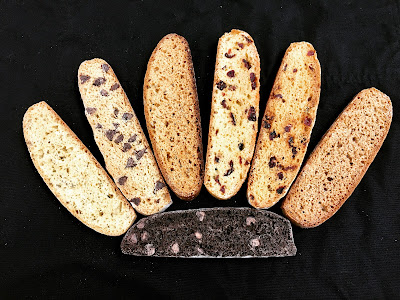Amanda’s Biscotti Amanda has been making Biscotti for over 15 years. Her flavors include: Lavender Honey, Cranberry Orange, Chocolate with Chocolate Chip, Anise, Spice, Cranberry, Lemon Poppy, and Toasted Coconut with Chocolate Chips. The biscotti, those delightful, twice-baked Italian cookies that have captured the hearts and taste buds of many around the world. To embark on a deep dive into the origins of biscotti is to journey through time and savor the rich history of this beloved treat. Our story begins in the heart of ancient Italy, where biscotti, or "biscotti di Prato" as they were originally known, were born. The word "biscotti" itself stems from the Latin "bis" (twice) and "coctum" (baked), a fitting name for cookies that undergo a double baking process. The Birthplace: Prato, Tuscany Prato, a charming town in the Tuscany region of Italy, is credited with giving birth to biscotti. The origins can be traced back to the 14th century, whe...


%20-%201.png)










